There’s glowing skin, and then there’s skin that looks like a shiny crystal ball. Excessive sebum production is a result of your sebaceous glands working tirelessly to produce natural oil due to factors like genetics or hormonal fluctuations. Controlling sebum production is tough, but like in many other cases, solving the root cause can work wonders. Photodynamic Therapy or PDT is one such expert treatment which focuses on the principle of destroying the root cause, i.e. destroying the sebaceous glands to reduce sebum production.
Photodynamic Therapy or PDT

LED light therapy used in PDT treatment
PDT is a non-invasive treatment that helps reduce inflammation, especially in people who do not respond well to topical or oral treatments. During PDT, a photosensitizer is applied on troubled skin, blackheads, sebum and pores. The most common photosensitizing agent used during PDT treatment is ALA or 5-aminolevulinic acid. ALA was originally developed for skin cancer and keratosis, however its use in acne treatments began with the discovery that ALA is selectively absorbed by sebaceous glands and acne bacteria.
Once ALA permeates into the sebaceous glands and pores, a LED light mask or device with a certain wavelength of laser is radiated onto the skin in order to selectively destroy acne bacteria.
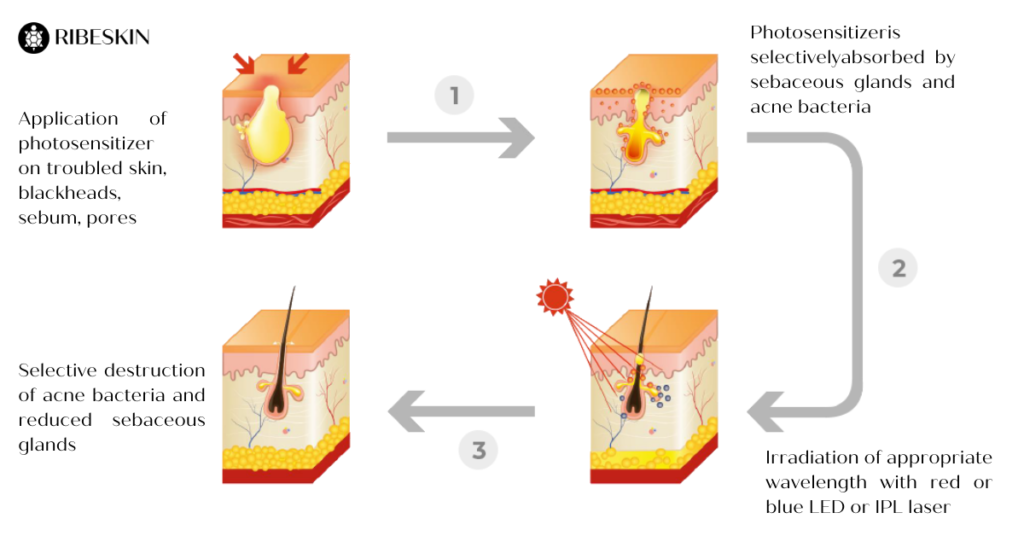
Process of PDT procedure
Since PDT Therapy tackles the very scientific principle of sebum management by reducing the sebaceous glands, it is a results oriented procedure, provided all the ideal procedure steps are implemented. However, as we spoke to multiple professionals around the world, while the effectiveness of light therapy in reducing sebum production is a well established concept by now, there are cases when the results don’t pan out as expected. A little digging brought some insights to the fore as to why this could be happening. Let’s explore some of those reasons and how you can tackle it as a professional.
1. Damage of Healthy Cells during PDT
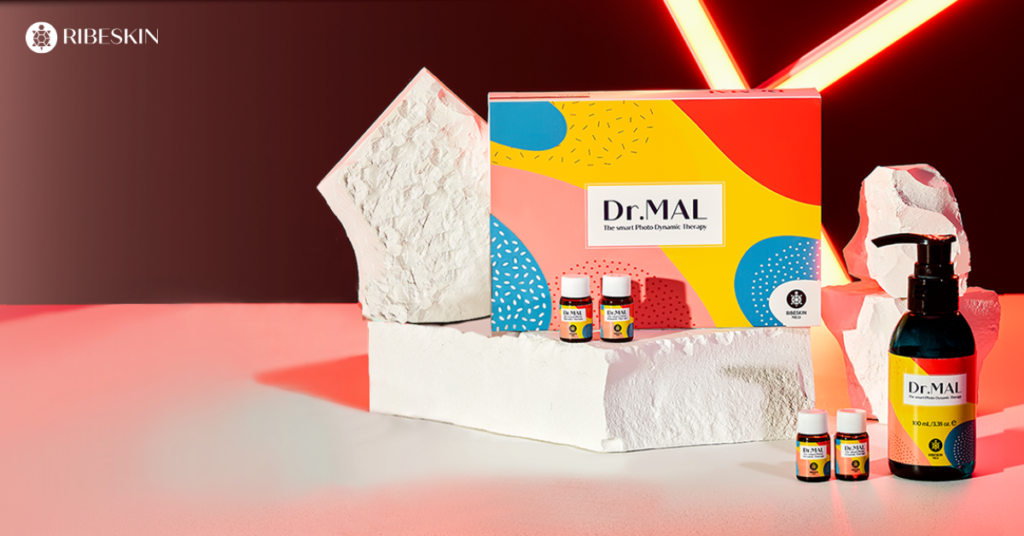
RIBESKIN Dr. MAL procedure kit
In the process of absorbing the ALA solution, it ends up destroying healthy cells as well. While ALA has become quite the standard during PDT treatments, this side effect of ALA demands for a stronger, alternative solution. RIBESKIN Dr. MAL helps tackle this with MAL or Methyl-ALA, a lipophilic photosensitizer formed by adding Methyl to the commonly used ALA for enhanced stability. Dr. MAL’s 10.8% MAL is oil-soluble as opposed to water-soluble ALA which enables MAL to have a greater selective absorption rate for pathologic cells compared to ALA. This aspect of MAL causes less damage of healthy cells, thereby resulting in less pain during irradiation, which is clinically proven, thereby maximizing the effects and reducing procedure time.
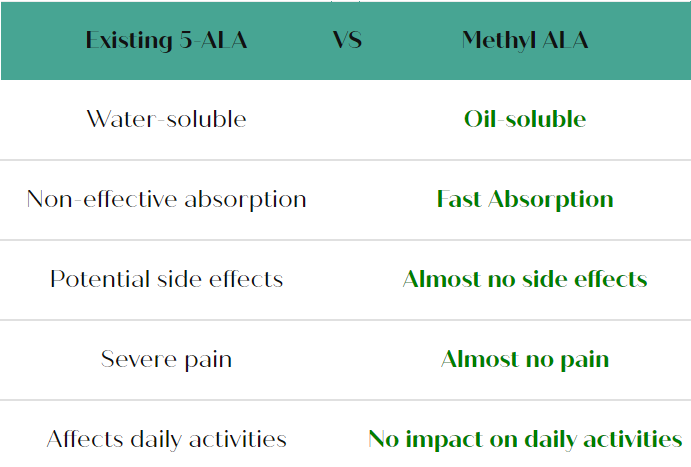
Furthermore, Dr. MAL also contains Panax Ginseng Callus Extract which protects the skin from the UV lights during irradiation. Using Methyl-ALA is shown to have the same effect as IPL or Intense Pulsed Light treatment by just irradiating the LED. In a study conducted by the The Korean society for acne research, 2011:41 to analyze the treatment outcomes with two light sources, red light vs IPL, it was found that after the first treatment, red light showed significantly decreased inflammatory lesions (26% reduction), compared to IPL (17% reduction).
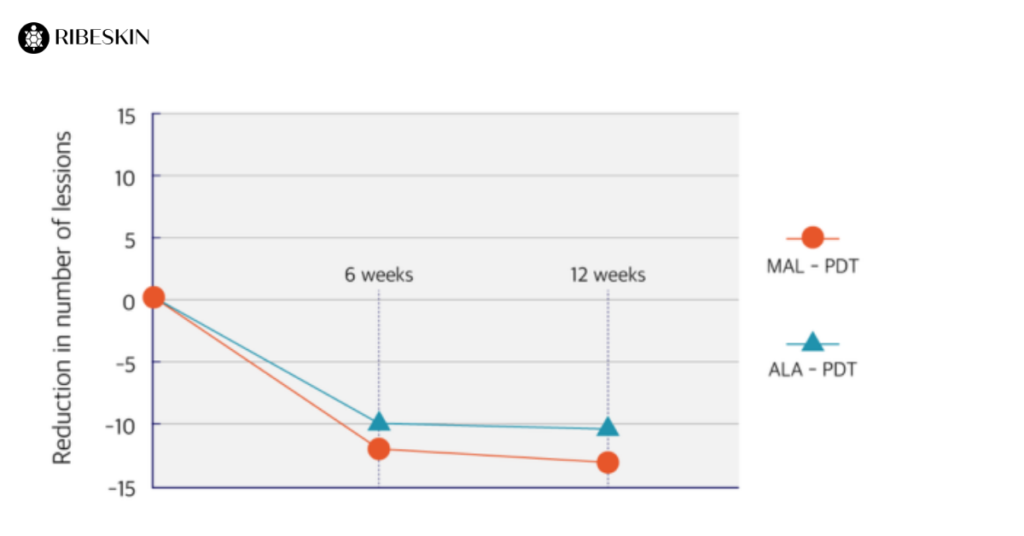 2. Appropriate post-procedure Care after PDT
2. Appropriate post-procedure Care after PDT
PDT procedure causes burning, stinging and a prickling sensation. These 4 simple steps are essential to build a robust post procedure routine to help you achieve the desired results of PDT.
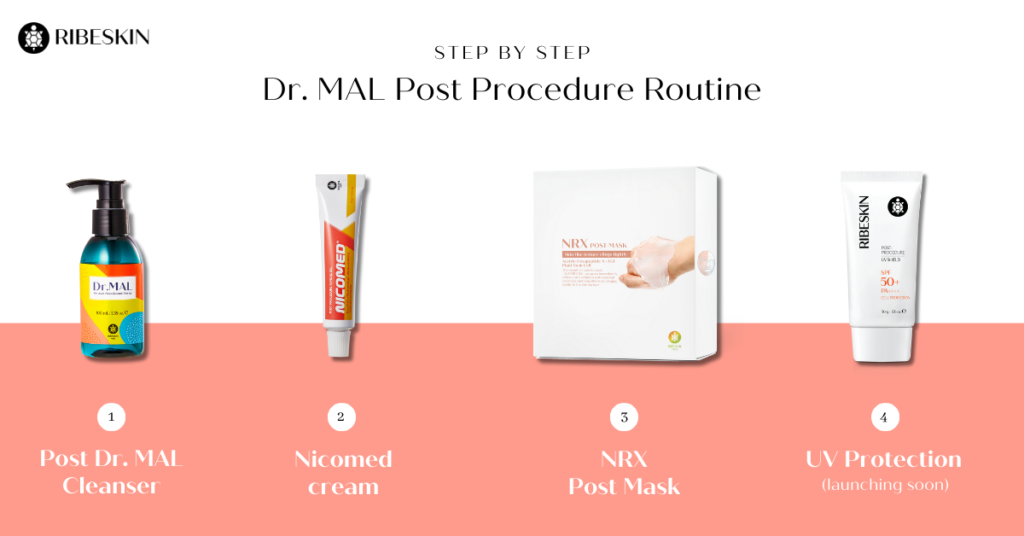
Post procedure skincare routine after PDT with RIBESKIN Dr. MAL
STEP 1 – Cleansing & Tanning prevention
Tanning of skin is a commonly noticed after effect after receiving PDT, often causing the patient to want to discontinue the treatment. After irradiation using an LED mask or device, it is essential to remove the remaining ALA on skin using a neutralizer to minimize this side effect caused by overexpression of the remaining ALA. The Dr. MAL procedure kit comes a with Post Dr. MAL Cleanser, the first in South Korea to use an ALA neutralizer, making it possible for the patient to resume daily activities simply with application of UV protection.
STEP 2 – Dryness prevention
One of the common after effects of PDT treatment is dryness, both requiring adequate management at the right time. The key is in using high-purity 4% Nicotinamide (Vitamin B3) which provides moisture to dry skin caused by PDT treatment, helping skin to normalize quickly. RIBESKIN Nicomed is an antibiotic-free inflammatory relief cream designed to address dryness caused by inflammatory acne treatment. Nicomed’s 4% Nicotinamide is proven to be equivalent to 1% Clindamycin which is widely used in acne prescriptions.
STEP 3 – Moisture Boost
Next up, add a super dose of moisture with the RIBESKIN NRX Post Mask or EP+ After care booster Mask which are formulated with ingredients specialized in protecting post procedure skin.
STEP 4 – UV Protection
Now finish it up with a sunscreen for UV protection and continue using the sunscreen for at least a week after the procedure. Managing exposure to the sun plays a crucial role in ensuring that the healthy cells that remain get the right environment to thrive in.
View this post on Instagram
RIBESKIN Dr. MAL procedure at an aesthetic clinic in Iran
3. Lack of Consistency in PDT Sessions
The recommended treatment cycle for PDT is a total of 3-5 sessions every two weeks. This treatment cycle is designed by keeping into account that acne usually remains inside the skin for three months before appearing on the external skin. By following the above procedure cycle diligently, MAL helps prevent new acne from appearing. Therefore, stopping the treatment in between sessions will result in inadequate blocking of new acne.

Recommended treatment cycle for RIBESKIN Dr. MAL
Switch to the Smart Photo Dynamic Therapy
Pain-free and non-steroidal, Dr. MAL is a PDT product designed for professional use consisting of Methyl-ALA 10.8% and Panax Ginseng Callus Extract optimized for acne-prone skin types. Dr. MAL is a special treatment program which prevents fundamental causes of troubled skin and inhibits recurrence of skin. Now that you have more insights on how you can level up your PDT treatments using Dr. MAL, let’s get into some detailed visual learning about performing a PDT procedure.
Join our community of global experts by signing in to RIBESKIN e-Academy where we share exclusive tips and details on using Dr. MAL for an efficient procedure.
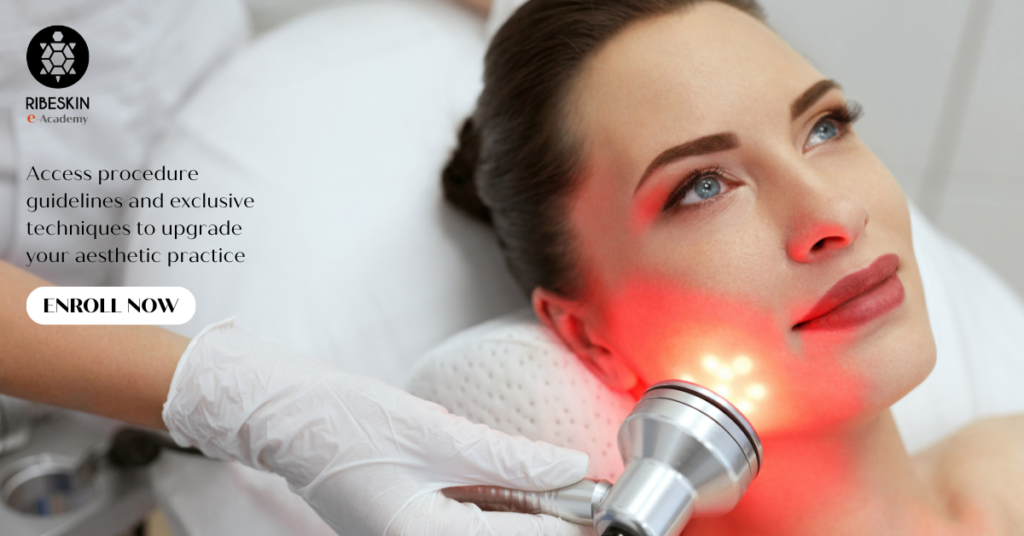
Access exclusive content at RIBESKIN e-Academy
Dr. MAL is available to ship worldwide. Visit our website here to know more about the product.
If you are interested in purchasing Dr. MAL for your clinic, or if you are a distributor of dermatology and aesthetic products, get in touch with us here – https://ribeskin.com/contact-us-2-2


